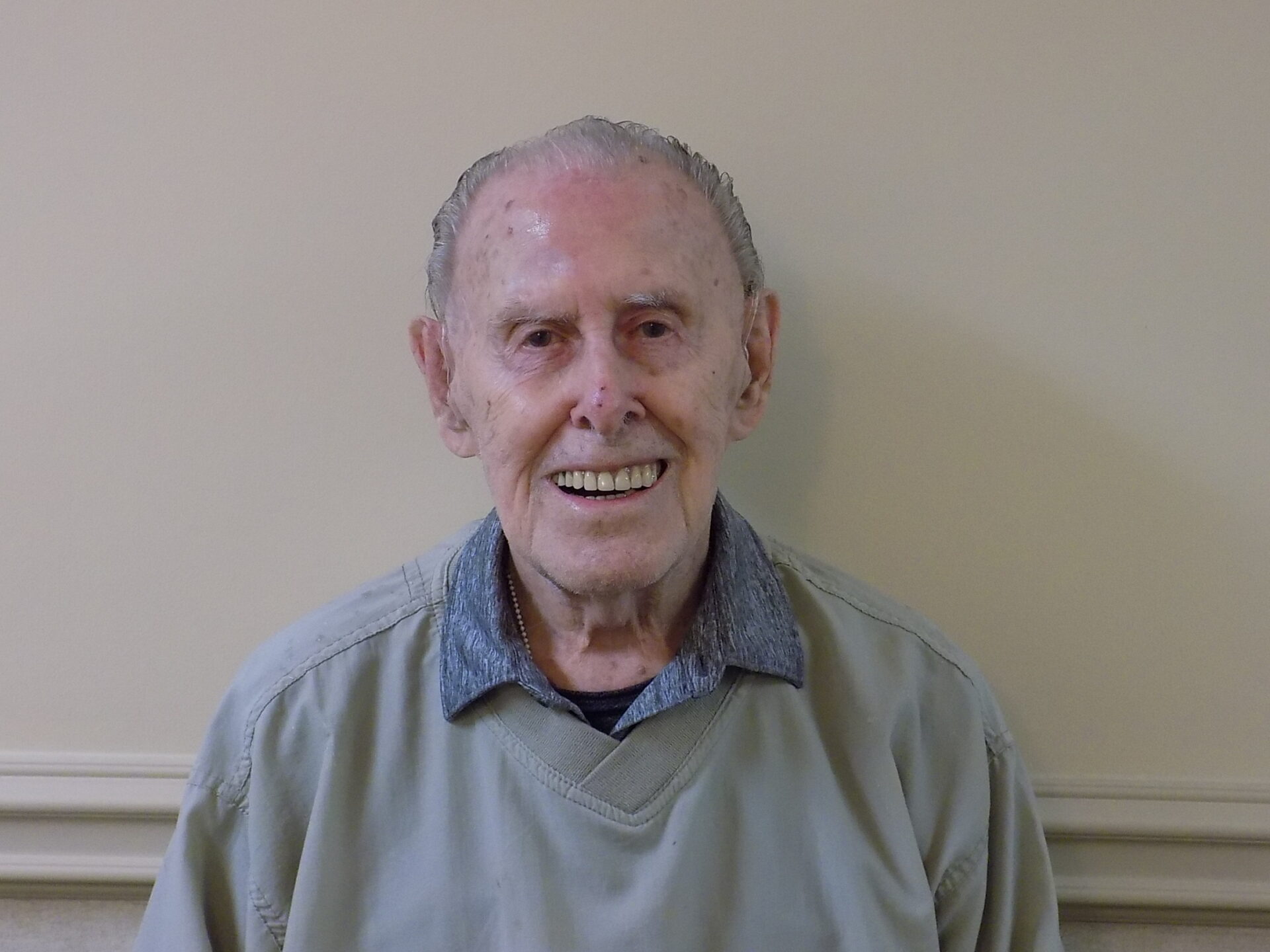You would be hard-pressed to think he would ever miss a meal. After all, Arno — a resident at Oakmont Parkway — did so much for his country during World War II. And that included getting by on some pretty skimpy rations over extended periods of time. But that wasn’t the hardest part of his tour of duty in Europe.
Arno spent 3-½ years with the Army’s famed 101st Airborne Division. His mission was not only a remarkable one, but a dangerous one.
“We used hang gliders,” he said. “That’s right, it was something else.”
Sneaking in under the cover of silence — the enemy can hear airplanes going over, but the stealth-like nature of the gliders is what made them so effective — Arno was the gunner as part of a 12-man crew.
Sneaking in on gliders to battle the Germans
As if not wanting to be target practice for the Germans wasn’t stressful enough, Arno explained what made the gliders so tenuous.
“The glider was a piece of plywood, that’s all it is,” he said. “It was really scary. We had to find a farmer’s field to land in, and once we landed there, we stayed there. There’s no way of pulling the gliders out of a field.”
Training for the hang gliders wasn’t easy; it took Arno and his fellow soldiers a year before they were ready to enter World War II — through the beaches at Normandy. Then, it was off to Holland.
“Holland, with no hot food for three months,” he said. “That’s right. But you see, we were young. But we got back a week. Ever hear of Bastogne? After a couple of weeks, they put us in wide-open trucks and rushed us to Bastogne. Got there and dug a foxhole just deep enough to get your body in there. The next day, the foxholes froze, so they weren’t able to drop anything to us. So we had little packages of food. And that’s what we did, one package was all we could have, each day for seven days. We were starving, that’s for sure.”
Bastgone — site of the game-changing “Battle of the Bulge” — helped set the tone for the remainder of the Allied effort in Europe. Arno also had one more noteworthy assignment in World War II, getting set to “The Berghof,” which was Hitler’s home in the Bavarian Alps. It was his last stop before being sent home — where he could eat well again.
There’s no place like home
“Oh, man, regular food,” he said with a smile. “I wasn’t craving anything in particular there, just decent food back here. That’s when you realize how good it is.”
Born and raised in Detroit (where he attended Southeastern High School), Arno returned home to marry his girlfriend within three months. They were married for 38 years and and two children, living for many years in St. Clair Shores.
For 30 years, Arno worked as an upholsterer for JL Hudson (“then Art Van put us out of business,” he said) before spending seven more years working with TVs and radios for Hudson.
His advice for enjoying life? Well, even after being a part of several major World War II battles — and doing so on a pretty empty stomach — his words are simple.
“Just enjoy every day,” he said. “That’s all you have to try to do.”
